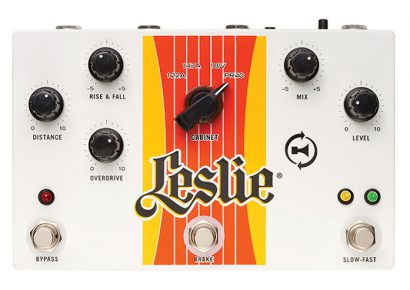This isn’t just some transistorised simulation of an amp channel though, the V3 has three 12AX7 valves at the heart of its sound (two configured as common anode amplifiers and a third configured as common cathode amplifies and used a tone stack driver). The two channels have full controls for volume, middle, treble, bass and gain. The channels are rhythm and lead, accessible via a channel footswitch. There’s also a Bypass switch (true bypass so when you stomp on it the pedal circuit is completely out of your signal chain). Power is via a supplied adaptor – no batteries for this one.
The two channels are quite different to each other. Rhythm is more open and amp-like, and not quite as high-gain, while lead is more compressed and saturated. The rhythm channel is incredibly responsive: you can do the tube amp trick of dialling in your rhythm gain with the guitar’s volume at about 6, then back it off for a cleaner tone or turn it up for solos. There’s a great sense of depth and note separation to open chords and a satisfying crunch on power chords. This channel can also be coaxed into a nice jangly alternative sound or a harder-hitting heavy rock distortion. The lead channel is no less toneful, though in a different way. It’s great for sustaining melodies and high-speed leads, and while it’ll dish out monstrous extreme metal and djent rhythm tones, it’ll also give you a harmonically alive blues-rock lead sound. It’s not as flexible as the rhythm channel in terms of dynamics – turn the gain up past a certain point and there’s no going back – but it makes up for it with tonal sculptability.
This is a really great pedal for taking true control over your sound, whether you’re using it with a tube amp or if you want to add some real tube growl to a modelling amplifier. It doesn’t get bogged down in too many controls or options, it simply gets down to business in giving you a pair of very flexible valve amp tones with which to find your personal sound.
For more details, head to sherlockamps.com.

